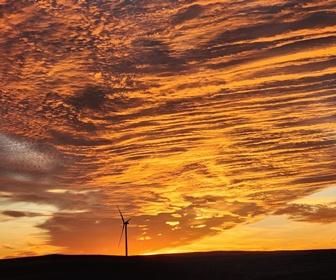US production of renewable energy reached an all-time high in the first six months of 2021, according to a Sun Day Campaign analysis of new data released by the U.S. Energy Information Administration (EIA).
The latest issue of EIA's "Monthly Energy Review" report (with data through June 30, 2021) reveals that renewable sources accounted for 12.91% of the U.S. energy produced (and 12.71% of the energy consumed) for electricity, transportation, heating, and other uses. Renewable energy production during the first half of 2021 was 6.160 quadrillion Btu (quads) - 3.03% more than during the same period last year and 4.23% higher than in 2019.
A sharp drop in hydropower (down 12.59%) and smaller declines in geothermal (down 2.83%), and biomass (down 0.53%) were more than offset by growth in solar energy (up 24.02%), wind (up 9.96%), and biofuels (up 6.46%).
Wind is now the largest single renewable energy source, accounting for 27.78% of total U.S. renewable energy output, followed by biomass (21.28%), hydropower (19.84%), biofuels (17.11%), solar (12.32%), and geothermal (1.67%).
A sharp drop in hydropower (down 12.59%) and smaller declines in geothermal (down 2.83%), and biomass (down 0.53%) were more than offset by growth in solar energy (up 24.02%), wind (up 9.96%), and biofuels (up 6.46%).
Wind is now the largest single renewable energy source, accounting for 27.78% of total U.S. renewable energy output, followed by biomass (21.28%), hydropower (19.84%), biofuels (17.11%), solar (12.32%), and geothermal (1.67%).










